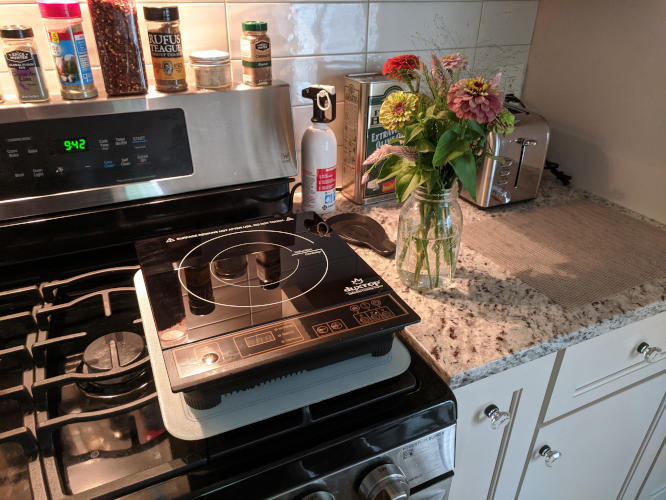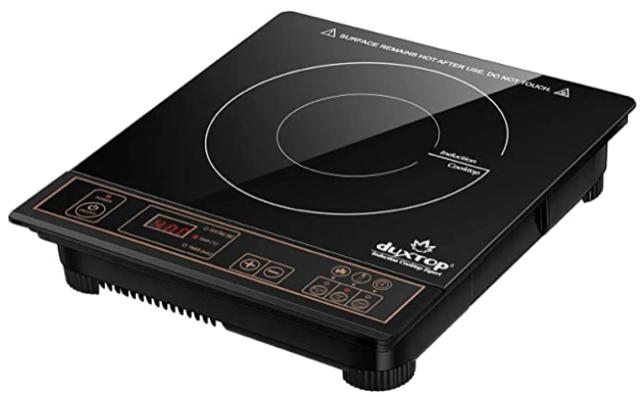This week we finally got an induction stove, and it is absolutely great. It provides impressively rapid heating, unsurpassed control of temperature, and is much more energy efficient than standard stoves.

Diferent from Gas or Electric Stoves
The way it works is completely different than a traditional gas or electric stove. It’s called an “induction” stove because it induces an oscillating magnetic field in ferrous cookware. The oscillating magnetic field creates resistance in the metal cookware, heating the cookware directly. No heat needs to be transferred to the cookware, because the cookware itself heats up.
It’s amazing how quickly a pot of water comes to a boil, if you use one of the stronger power settings. There are 10 power settings, and an option to set the desired temperature instead, also with 10 possible settings. This means you get the combination of rapid heating and fine, accurate temperature control.
Because an induction stove is so efficient, you will save on your electric or gas bill. The stove we got was only $49.95 and is sturdily built, with no moving parts. It will last a very long time, certainly much longer than it will take to offset its purchase price in energy savings. For your reference, the model we got is a Duxtop 1800W Portable Induction Cooktop Countertop Burner, Gold 8100MC/BT-180G3.

Ferrous Cookware is a Requirement
One limitation is that you can only use cookware that contains iron in some form. You cannot use cookware that is exclusively glass, ceramic or aluminum. If you try, the stove will immediately complain, and not turn on. The best way to test whether a piece of cookware can be used is to see whether a magnet is attracted to it. If yes, then go ahead.
Cookware designed specifically for use on an induction stove is also available. This type of cookware offers further advantages in energy efficiency and cooking convenience, because the cookware has a ferrous bottom but aluminum sides, which means the food is heated from the bottom, and no energy is wasted in heating the sides.
A small fan comes on when you begin using the stove, because the glass surface of the stove gets hot from contact with the cookware. The fan stays on even when you turn the burner off, until the glass top surface has cooled down. If you still hear the fan going, don’t touch the burner surface.
Induction Stoves Are Safer
An induction stove is much safer than either a gas stove or an electric stove, and certainly much safer than either camping stove or a hot plate, because there is no fire hazard. With an induction stove there is no flame, the glass surface heats only minimally, and the cookware never even approaches ignition temperature.
We absolutely love this induction stove, so much that we are now planning to completely discontinue use of our large gas stove. We just don’t need it any more, but we’re not going to get rid of it, because it makes a handy if huge and heavy stand for the induction stove. All we did was place a glass trivet under the induction stove, and then place them both on top of our gas stove. This works perfectly.
I would strongly recommend this type of stove. You’ll save electricity and therefore save money, and cooking will become more convenient.
The Larger Purpose In All Of This
One major reason we got this stove is that we have the personal goal of making sure that our home is not an emitter of CO2 in any way. Discontinuing our use of natural gas from our stove is only one step along this journey. We also plan on replacing our gas furnace with electric heating, and replacing our gas-powered on-demand water heaters with electric versions. We already drive two electric cars, and are planning on replacing our roof with solar tiles in order to generate all of our own electricity from non-CO2 sources.